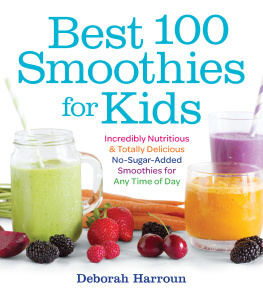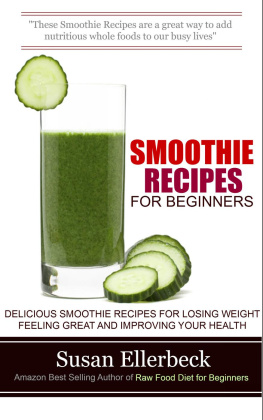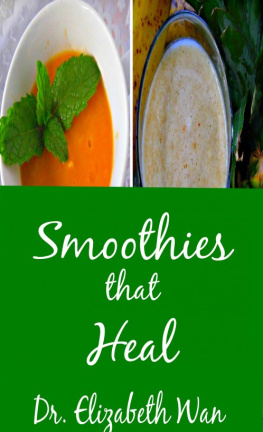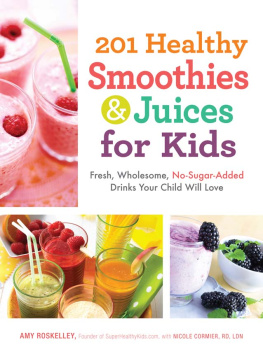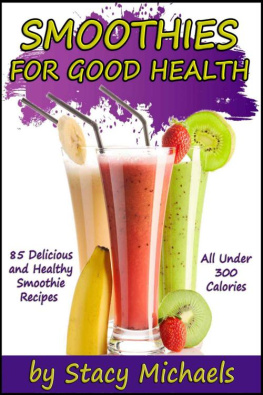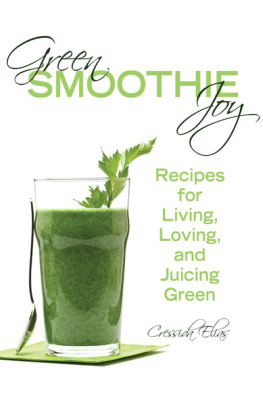The Harvard Common Press
www.harvardcommonpress.com
Text and photographs copyright 2015 by Deborah Harroun
All rights reserved. No part of this publication may be reproduced or transmitted in any form or by any means, electronic or mechanical, including photocopying, recording, or any information storage or retrieval system, without permission in writing from the publisher.
The Library of Congress has cataloged the print edition as follows:
Harroun, Deborah.
Best 100 smoothies for kids : incredibly nutritious and totally delicious no-sugar-added smoothies for any time of day / Deborah Harroun.
pages cm
ISBN 978-1-55832-847-1 (paperback)
1. Smoothies (Beverages) 2. Sugar-free diet--Recipes.
I. Title. II. Title: Best one hundred smoothies for kids.
TX817.S636H37 2015
641.8'75--dc23
2014041183
Special bulk-order discounts are available on this and other Harvard Common Press books. Companies and organizations may purchase books for premiums or resale, or may arrange a custom edition, by contacting the Marketing Director at the web address above.
Front cover and interior photographs by Deborah Harroun
eISBN 978-1-558-32850-1
v1.0315
For Abigail,
Easton,
and Camden,
my favorite taste testers
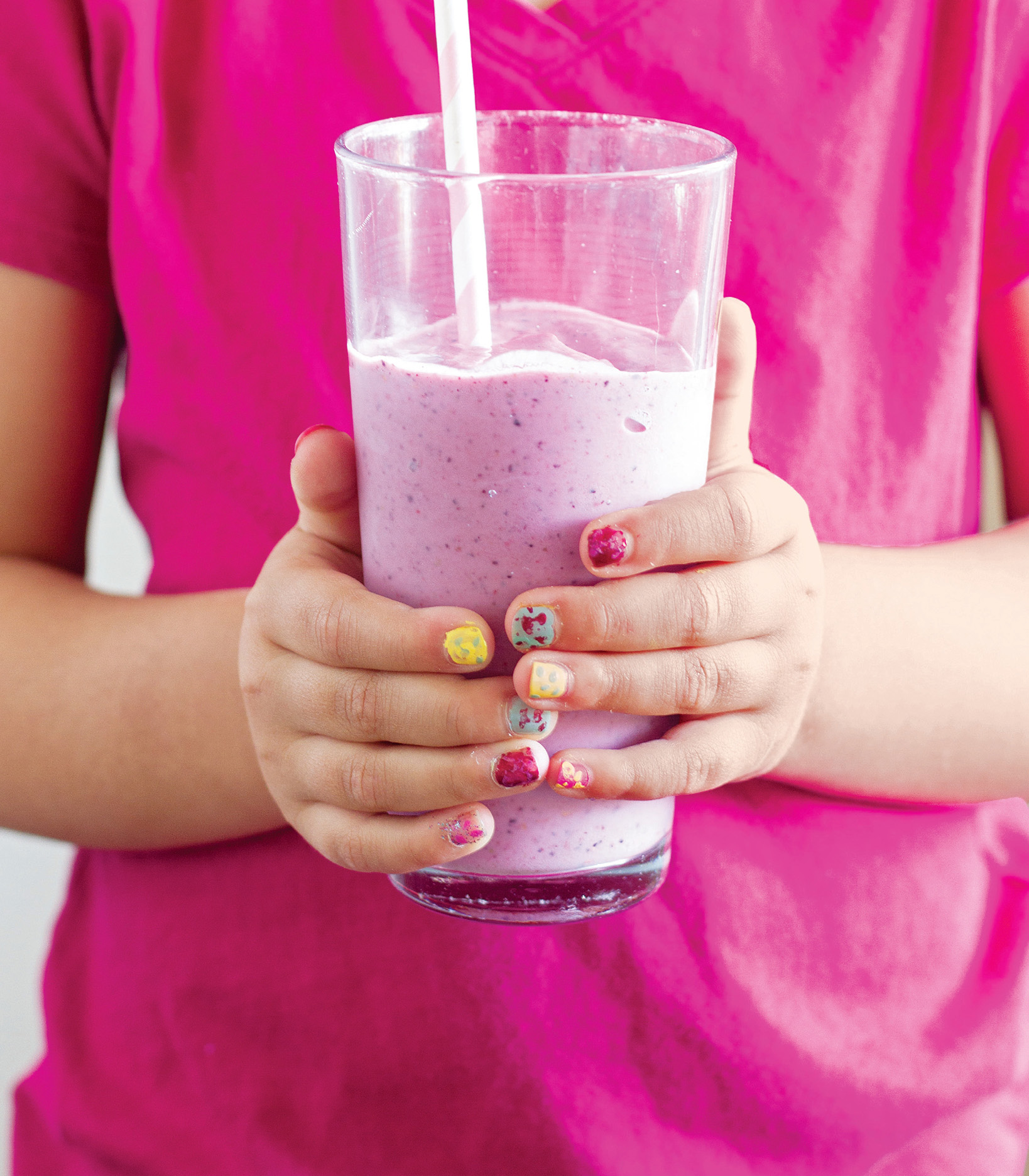
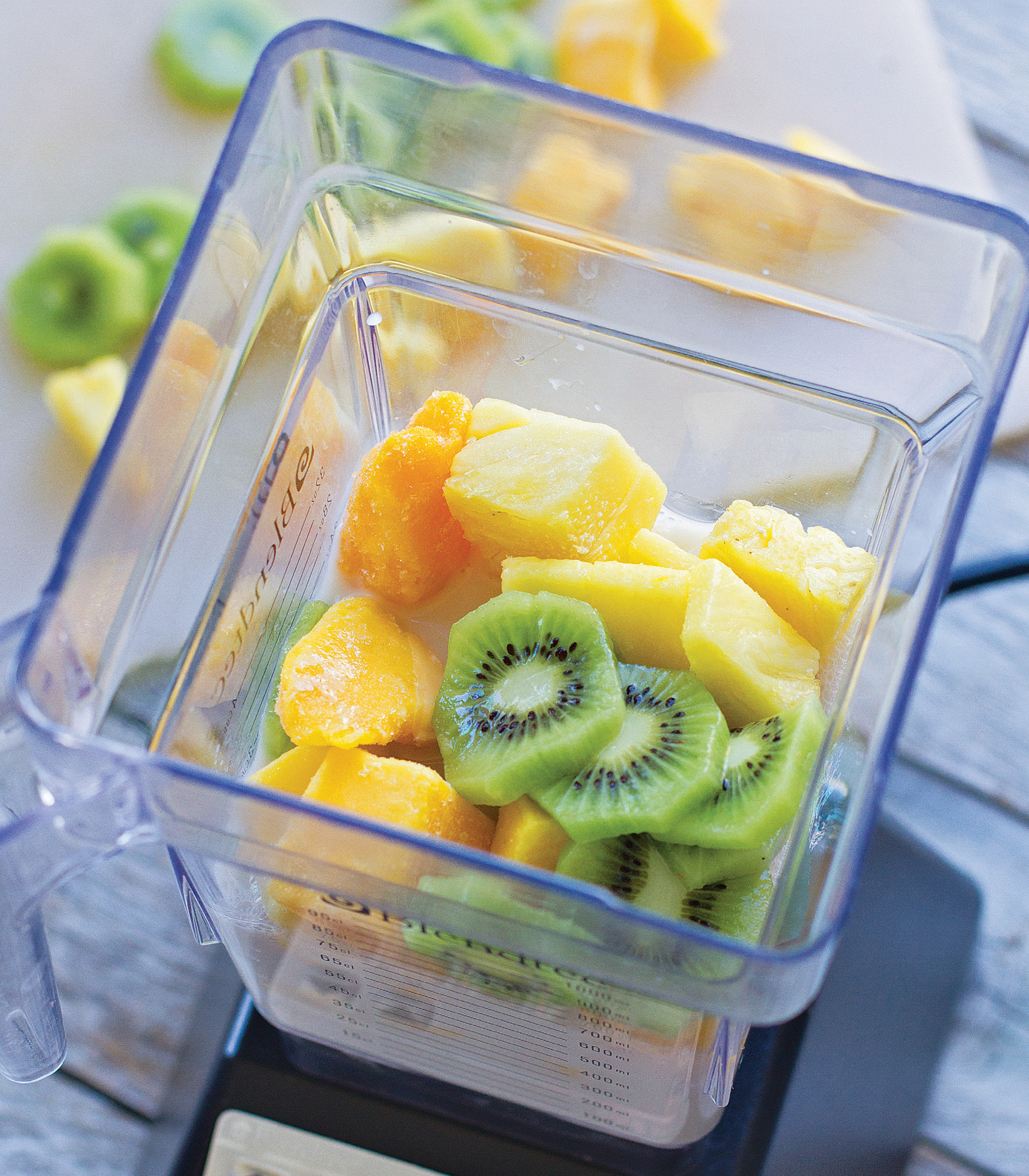
Introduction
I always thought my kids would be the best eaters. In my dreams I would make curries and enchiladas and spinach quiche, and my kids would just gobble them upand then ask for more. And at snacktime theyd beg for broccoli and carrot sticks.
Wowdid I have a rude awakening.
To give them credit, my kids actually ate quite well as babies. Each one of them was excited when I started to give them spoonfuls of sweet potato puree and mashed peas and carrots; they ate them with gusto. But once I made the switch from purees to regular solid food, things changed.
Today my kids have very different palates. Every day theres a new something that one of them wont eat. I started to worry about how many vitamins, minerals, and nutrients my kids were getting on a daily basisespecially since fresh fruits, and especially fresh vegetables, werent at the top of the list of things they loved.
My kids wake up hungry, so mornings can be pretty crazy around my house. One morning I fed the kids breakfast and then made a smoothie for myself. They were there, watching me, and they all wanted to help Mom drink her smoothie.
Thats when it hit me. Smoothies may be my answer to supplementing their diets with healthy foods. I would puree fruits and vegetables, adding protein and carbohydrates to their diet that would help them get through the day.
I started trying out different flavor combinations, and I was so happy to see how excited my kids were to drink smoothies. Even if they didnt end up liking some of the combinations I made, they would at least try them, which was a miracle in and of itself. And it turned out that my pickiest eater was actually the biggest smoothie fan.
While I still try to make sure there are fruits and vegetables on their plates at every meal, serving up a smoothie has helped to put my mind at ease. I know there is always at least one way to get my kids to try to eat healthy!
The Anatomy of a Smoothie
Once I discovered just how much my kids loved smoothies, I set out to find some great recipes. I was surprised, though, to find what kinds of ingredients went into many smoothie recipes that I came across. There were so many recipes that made huge smoothies filled with hundreds of empty calories as well as ingredients that were not necessarily healthylike ice cream and lots of added sugar. I wanted to make sure that I was giving my children something healthy but also teaching them healthy eating habits. So there are a few things that set my smoothie recipes apart from many others.
First, there are no added processed sugars. All of the sugars in this book are natural, such as naturally sweet fruit. If I call for fruit juice, I advise readers to make sure they use 100 percent fruit juice with no added sugar. If a recipe needs a sweetener, I use the least possible amount of a natural sweetener such as agave syrup or honey. I do add sugar-free cookies to a few indulgent recipes; you should serve them sparingly, as a treat or dessert.
While I dont worry as much about calories for children since their growing brains and bodies require a healthy dose of calories, the serving sizes in these recipes are smaller and perfect for kids. Each serving is between 6 and 10 ounces. Kids will get plenty of nutrients, but they arent having a whole days worth of calories in one smoothie.
Ive divided the smoothie recipes in this book into five chapters. You will find breakfast smoothies, lunchtime smoothies, snacktime smoothies, dessert smoothies, and bedtime smoothies. The breakfast chapter is full of recipes that will get your kids started off on the right foot for the day. Theyre filled with ingredients that taste great first thing in the morning, and theyre packed with fiber and protein to help get your kids through the morning. The lunchtime smoothies are a little heartier, with ingredients that will help fill up little bellies. They are also a great way to give your kids a natural burst of energy that will keep them going through the afternoon. Snacktime smoothies are perfect for after school or as an afternoon snack when the kids start complaining that theyre hungry, but its not quite dinnertime yet. These smoothies will take the edge off their hunger without ruining their appetites when suppertime comes. The dessert smoothies are a bit more indulgent but are still filled with nutrients. I love giving my kids something healthy for dessert! All of the bedtime smoothies have secret ingredientslike cherries, which help regulate sleep cycles, and chamomile tea, which is calmingto help make sure your kids have the best nights sleep.
The Taste Testers
Every single smoothie in this book was taste tested by my three kids. Now, I wont exaggerate and say that every smoothie was a hit with all three, but I considered it a success if two of the three loved it. (Its impossible to please all of them every time!)
Abbi: My oldest (five at the time of the writing of this book) is an okay eater. She ate well as a baby, but at around two years old, she started to become very picky. As she has gotten older, she has become a lot better about trying new things, and actually liking new things. I can always get her to at least try a bite of everything on her plate, even if she doesnt end up wanting to eat it. Surprisingly, her favorites are shrimp and steak. And strawberries. You cant forget the strawberries!
Abbi is my biggest smoothie critic, though. She loves any smoothie with strawberries, but she doesnt like a lot of texture or seeds in her smoothies. And she does not like peppermint, so any smoothie with peppermint extract wont go over well with her.
Easton: My middle child, age three, is by far the pickiest. He thinks there should be only one food groupchocolate. He doesnt complain about not liking foods; he just wont eat something if he doesnt want it. He is the one I struggle with the most when it comes to eating quality food. His favorites are pasta, moms homemade pizza, and bread. And did I mention chocolate?
Easton is the one who needs the smoothies most of all, because of his refusal to eat just about everything else. Luckily, he is a big smoothie fan. He will gladly take Abbis serving of the mint-flavored smoothies. And while he is a chocoholic, he will drink any smoothie that is full of fruits or vegetablesincluding the green ones!
Next page
